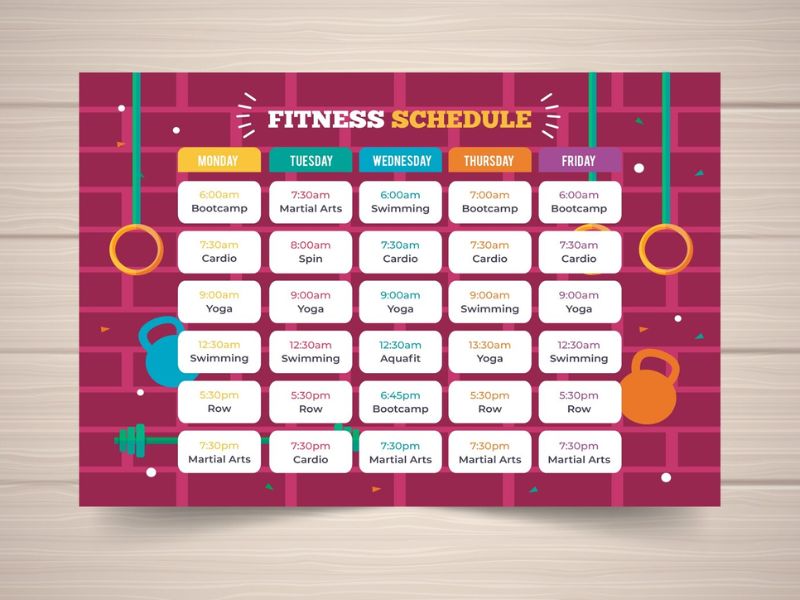For many beginners, strength training can feel like an exciting new adventure, but the question of “how do I get stronger?” can quickly become overwhelming.
The answer lies in a concept called progressive overload. Progression lies at the heart of strength training, serving as the driving force behind muscle growth and performance improvement.
At its core, progression involves gradually increasing the demands placed on your muscles over time.
This principle of progressive overload stimulates muscle adaptation, leading to strength gains and enhanced athletic performance.
Why Progression is Important for Beginners in strength training?

Progression in strength training refers to the systematic increase in resistance, intensity, or volume of exercises over time.
This progression challenges the muscles to adapt and grow stronger to meet the increased demands placed upon them.
By progressively increasing the workload on your muscles, you stimulate muscle growth and strength gains. This leads to improvements in muscular strength, endurance, and overall fitness.
For beginners, embracing progression is essential not only for building strength but also for preventing plateaus and sustaining long-term motivation on their fitness journey.
Here are some additional advantages:
- Increased Bone Density: Strength training helps strengthen your bones, reducing the risk of osteoporosis later in life.
- Improved Metabolism: Muscle tissue burns more calories at rest, meaning you’ll burn more calories even outside the gym. [*]
- Enhanced Athletic Performance: Strength training translates to better performance in other activities, whether it’s running, playing sports, or simply carrying groceries.
- Boosted Confidence: Witnessing your strength improve can be incredibly rewarding and motivating, fostering a sense of accomplishment and self-confidence.
Nutrition and Recovery: The Missing Pieces

While progressive overload and proper form are crucial for strength training success, fueling your body and allowing it to recover are equally important.
Here’s how nutrition and recovery play a role:
- Nutrition: Muscle growth and repair require adequate protein intake. Aim for 0.8-1 gram of protein per pound of bodyweight daily. Consume a balanced diet rich in fruits, vegetables, and whole grains to provide your body with the necessary energy and nutrients. [*]
- Recovery: Your muscles grow and strengthen during rest periods. Schedule rest days between workouts and prioritize quality sleep (7-8 hours per night) for optimal recovery.[*]
How to Increase the Weight I Lift as I Get Stronger?

As you get stronger, your muscles will require a greater challenge to continue growing. Here’s a step-by-step approach to safely and effectively increase the weight you lift:
1: Assess Your Current Strength
- Choose an exercise you perform regularly and focus on the weight you can lift with proper form for 8-12 repetitions. This is your current baseline.
2: Small Weight Increases
- Once you can comfortably perform 8–12 repetitions with good form, it’s time to increase the weight. Aim for a 5-10% increase in weight for most exercises.
3: Monitor Your Reps
- After increasing the weight, see how many repetitions you can perform with proper form. If you can still achieve 8-12 reps comfortably, that’s great! You’ve successfully progressed.
4: Plateaus and Adjustments
- If you struggle to reach 8 reps with the increased weight, it might be too soon to move up further. Here are your options:
- Maintain the weight: Continue performing the exercise with the current weight until you can comfortably reach 8-12 reps. This allows your muscles to adapt to the new challenge.
- Increase sets: If maintaining weight feels too easy, try adding another set of the exercise at the current weight before attempting another weight increase.
How Should I Adjust Sets, Reps, and Rest Periods as I Progress?
As your strength improves, it’s essential to adjust your training variables, including sets, reps, and rest periods, to continue making progress.
Understanding the principles of sets, reps, and rest is crucial for optimizing your training program.
Sets refer to the number of times you perform a specific exercise in a workout session.
Reps, or repetitions, indicate the number of times you complete a single movement of an exercise within a set.
Rest periods refer to the duration of rest between sets or exercises.
For example- If you’re doing bench press of 5-5 kg each side, and can do easily 12-15 reps, then add 2.5 kg’s each side and check how many you can get?
Let’s say you get 6-8 reps or 8-10 reps with proper form and mind muscle connection, don’t add more weight to it, until you get 12-15 reps from this weight only.
When you start getting those reps increase the weight.
Periodization: Structuring Your Training for Long-Term Gains

As you progress in your strength training journey, incorporating periodization can be beneficial.
Periodization involves strategically planning your training program by varying workout intensity, volume, and rest periods over time. [*]
This helps to:
- Optimize Performance: By manipulating training variables, you can target specific fitness goals and maximize your results.
- Prevent Plateaus: Regularly changing your training routine keeps your body challenged and prevents plateaus in progress.
- Reduce Injury Risk: Periodization allows for built-in recovery periods, helping to prevent overuse injuries.
There are different periodization models, but beginners can start with a simple approach.
For example, you could focus on increasing weight for a few weeks, followed by a period of maintaining weight while increasing reps.
Injury Prevention: Train Smart, Stay Safe

Proper form is essential for preventing injuries. It allows you to target the intended muscle groups and minimizes stress on your joints. However, injuries can still happen.
Here are some tips for staying safe:
- Warm-up before each workout: Prepare your body for exercise with light cardio and dynamic stretches.
- Cool down after each workout: Include static stretches to improve flexibility and reduce muscle soreness.
- Listen to your body: Don’t push through pain. If you experience pain, stop the exercise and consult a healthcare professional.
- Focus on quality over quantity: It’s better to perform exercises with proper form using lighter weights than to use heavier weights with compromised form.
- Consider prehabilitation: Exercises that strengthen muscles around vulnerable joints can help prevent injuries. Common areas for prehabilitation include the core, shoulders, knees, and lower back.
Effective Strategies for not going into ego lifting while progression

While progression is essential, it’s equally important to avoid the trap of ego lifting, where you sacrifice form and safety for the sake of lifting heavier weights.
Here are five unique and highly effective strategies for beginners to ensure safe and sustainable progression:
- Focus on form: Prioritize proper technique over lifting heavy weights. Consistency in form not only reduces the risk of injury but also maximizes muscle engagement, leading to more effective workouts.
- Listen to your body: Pay attention to signs of fatigue, discomfort, or pain during workouts. Pushing through unnecessary discomfort can lead to injury and setbacks in your progression journey.
- Set realistic goals: Establish achievable short-term and long-term goals based on your current fitness level and capabilities. Celebrate small victories along the way to keep motivation high and maintain momentum.
- Track your progress: Keep a training log to monitor your lifts, sets, reps, and rest periods. Tracking your progress allows you to identify patterns, track improvements, and make informed adjustments to your training program.
- Stay humble and patient: Understand that progress takes time and consistency and avoid comparing yourself to others. Focus on your own journey and celebrate your progress at every stage.
Conclusion
In conclusion, the journey from beginner to advanced in strength training is both challenging and rewarding.
By understanding the importance of progression, implementing effective strategies, and staying patient and consistent, beginners can navigate this journey with confidence and success.
Remember to prioritize proper form, listen to your body, and celebrate your progress along the way.
Embrace the process, stay committed to your goals, and enjoy the transformative power of strength training on your fitness journey.


6 thoughts on “Strength Training: Beginner To Advanced Guide”